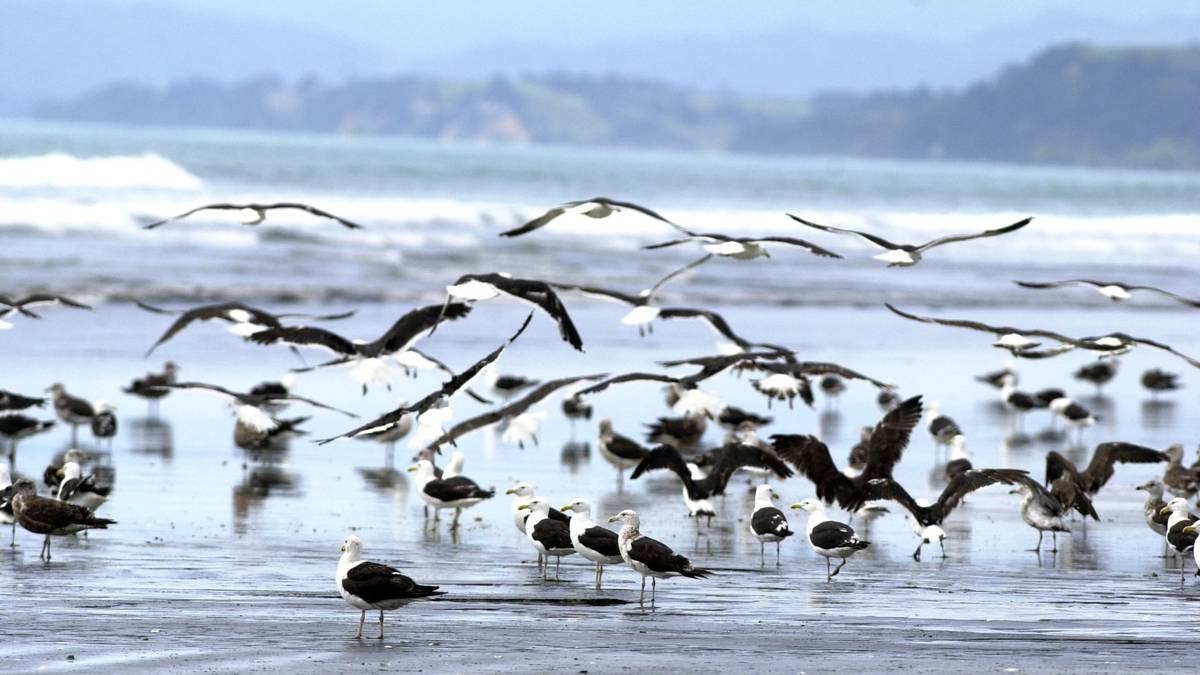Black-backed gulls — if that’s the type of seabird seen over Kaitaia — are usually spread out along Ninety Mile Beach but will occasionally congregate in large numbers in one place, a bird expert says. Photo / Ben Watson
“Like a scene out of David Attenborough” — that’s how a Kaitaia resident describes the vast flocks of birds that flew over her town two evenings in a row.
Margaret Pere was on the deck of her Pukepoto Rd home about 5.30pm on Friday just as the sun was setting, when she saw what looked like an endless train of birds, moving up and down in a wave-like motion and stretching as far as she could see towards the coast.
They were flying from west to east, roughly from Ahipara over The Warehouse at the northern end of town towards Unahi.
“They just kept coming and coming and coming. It was just amazing. The only time I’ve seen something like that was in a David Attenborough documentary,” Pere said.
The birds were too far away to tell what they were but Kaitaia residents who saw them from closer quarters said they were gulls.
Pere said a large number of birds passed over the town again on Saturday night but had dispersed into smaller flocks by then.
Other Northlanders saw a large flock of gulls flying over Kawakawa around noon on Sunday and alighting on roofs at Bay of Islands College.
/cloudfront-ap-southeast-2.images.arcpublishing.com/nzme/F7BSKJBHTR522T7KHL43FWGVZM.jpg)
Les Feasey, a former Far North representative for Birds New Zealand, said bad weather — or a looming change in weather or weather cycles — was the most frequent explanation given when large flocks of gulls, particularly the protected native red-billed gull, were seen on the shore.
The birds usually nested away from humans on offshore islands.
The larger black-backed gulls were spread along the length of Ninety Mile Beach but large numbers could concentrate in one area where food was easily available.
That used to occur most frequently in August-September but was now happening as early as July, possibly due to climate change.




